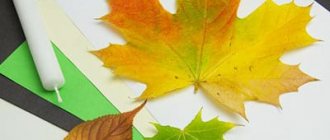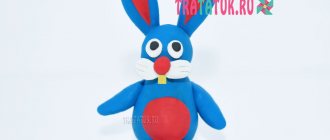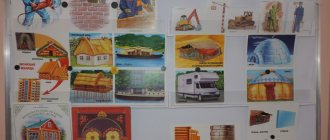Summary of a lesson by a teacher-psychologist with children of the middle group “Why do we need friends”
Aisylu Belogrud
Summary of a lesson by a teacher-psychologist with children of the middle group “Why do we need friends”
OA goals.
Educational:
Expand and generalize children’s knowledge about the concepts of “friend”, “friendship”; introduce children to the rules of friendly relations.
Educational:
promote the development of the ability to understand the emotional state of another person and adequately express your own; promote the development of communication skills and abilities.
Educational:
promote the formation of friendly relationships in the group, uniting the children's team.
Equipment: 5 balloons, markers, a ball, a toy bear, pictures of fairy-tale characters (positive and negative, small smiling emoticons cut out of yellow paper (according to the number of children), a sheet of cardboard on which a house is drawn (a house made of colored cardboard).
OD move.
1. Ritual of the beginning of the lesson. Greetings.
Children sit on chairs in a semicircle.
Psychologist: Hello, guys! In order to start our lesson, we need to sit comfortably on chairs and listen to the music (listening to the melody, and now, let's close our eyes and listen to our breathing.
Psychologist: And so, we are ready to start our lesson, now we will play the game “I Like You.” The ball I hold in my hand will help us express the warm feelings we have towards our friends. So, now we will pass the ball to each other, and talk about why the friend who sits next to us can become our best friend. The game continues until each of us hears warm words addressed to us.
2. Conversation about friendship
Psychologist: Well done guys, you coped with the task ahead of us. Today Mishka came to visit us. He told us in confidence that he had no friends at all. And he asks us to teach him to be friends. Shall we help Mishka? Yes? Then, let's tell Mishka:
• What is friendship?
• Why do we need friends?
Psychologist: Friendship is when people want to be together, when they play together, communicate, and don’t quarrel. Friendship is the smiles of friends. Friends are people with whom we are interested in playing. Friendship is when you know how to come to an agreement without shouting and quarreling; share toys, speak politely and not be rude; be attentive (caring) to a friend; be able to sympathize with a friend. If a friend is happy, then rejoice with him; if there is trouble, then be sad together. Raise your hands if you have friends. (Children raise their hands).
3. Conversation-game “Mood”.
Psychologist: Guys, now I would like to know what your mood is today. Why are you happy or happy?
Guys, look, there are balls on the table here. Let's imagine that these balls are the faces of children we know. You and I need to make these faces happy. To do this, we will take felt-tip pens and draw happy faces with them. But before that, we need to split into pairs. I have ribbons in my hands, come up and grab any ribbon. Those who have the ends of the same ribbon in their hands will stand in pairs. Well done! Now take one ball for each pair and get to work!
4. Game “Good - bad”.
Psychologist: In order to teach Mishka to be friends, we will play with you the game “Good - Bad”. Let's listen to the rules of the game. I will talk about people's actions. If the deed is good, clap your hands; if it is bad, remain silent. (The psychologist names actions: “quarrel, help others, fight, make peace, greet each other, brag, ask for forgiveness, be greedy, share, call names, say nice words, be polite, be rude, give in”).
Psychologist: Now let's tell Mishka what needs to be done so that they want to be friends with us. How to be friends properly? (children's answers). So, what should you do to avoid quarreling? (Give in, share).
Let's show Mishka how to be friends and help friends.
5. Dynamic pause “If there is a good friend”
The mood has dropped, the matter is falling out of hand. children stand facing each other, hands up, gradually lower their hands
But all is not lost yet, they shake their fingers at each other
If you have a good friend. clap their hands
Let's handle this together, hold hands
Let's breathe a sigh of relief, sigh
Raise your spirits raise your hands up
And shake off the dust. shake off the dust. Smiling at each other
6. Game “Make friends with a fairy-tale hero”
Psychologist: Guys, Mishka and I will take turns showing you pictures of characters from different fairy tales and cartoons. All of them have different characters and actions. If you would like to be friends with the hero I will show, raise your hand; if you would not like to, do not raise it. The psychologist shows pictures with characters one at a time (Cinderella, Thumbelina, Pinocchio, Baba Yaga, Leopold the cat, Koschey the Immortal, Gorynych the serpent, Luntik). After showing each picture, the psychologist asks the children why they would/would not want to be friends with the fairy-tale hero.
Psychologist: Guys, why didn’t you choose these heroes? (shows pictures of negative characters that the children did not choose) (children’s answers). Nobody wanted to be friends with evil, greedy, unfriendly fairy tale characters. In order for people to want to be friends with us, we need to have good qualities. Be kind, cheerful, honest, ready to help. But you can also make friends with negative characters, but you need to teach them to be kind, not to do bad things, and teach them the rules of friendship.
Psychologist: Well done guys, I learned that you are all kind, polite, beautiful, cheerful. This means that you know how to be friends, and there is a smile in your group.
7. Friends for Mishka
Psychologist: Now Mishka knows what friendship is and why friends are needed. But he has no one to play with or be friends with. Let's help our Bear and make him friends out of sand. But, since we are friendly, polite guys, we will do this in pairs! So let's gather in a circle, and each of you will pull out one image from the magic bag and find a pair (pairs: circle and triangle, hedgehog and fox, apple and pear, cat and dog, cucumber and tomato - according to characteristics) (children perform task - in pairs, bear cubs are sculpted in one tray with sand).
Psychologist: Look how great you did! The bear will play with new friends and make friends. And now, it's time for us to say goodbye. Thank you very much, guys, for helping Mishka learn what friendship is and teaching him to be friends. Did you like our lesson today? What did you like most? Goodbye, guys!





